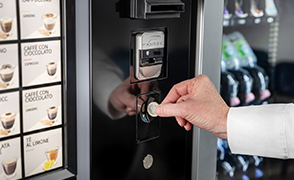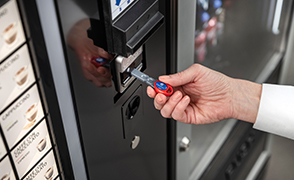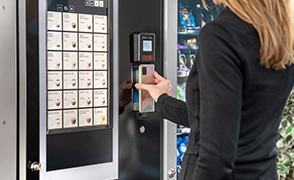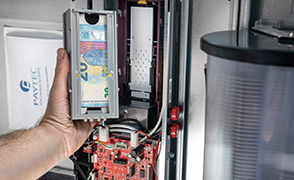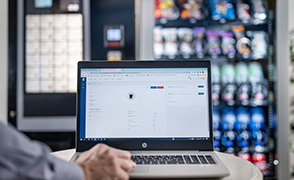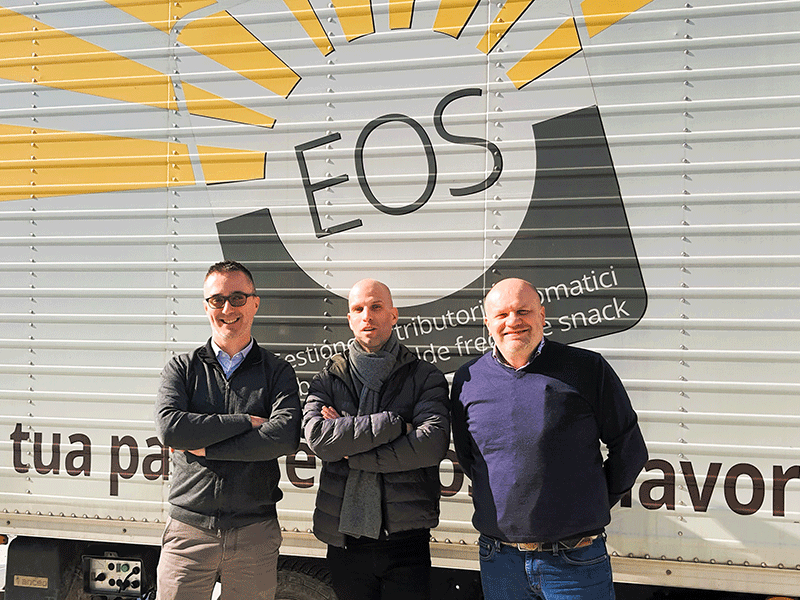
We interviewed Paolo Vezzoli and Luca Scrigna of EOS Srl (www.eoscaffe.it), an important vending company based in Izano (CR) with a branch in Piacenza. EOS has 40 professionals, 30 vehicles, 5000 customers and over 8200 vending machines which record over 45,000 consumptions per day.
For more than twenty years, EOS has chosen to use Paytec changegivers and key systems. But what drives such a dynamic and well-structured company to repeatedly confirm this choice?
The basis of a lasting relationship is undoubtly collaboration, an open dialogue in which efforts, resources and skills are combined to achieve a common goal: increasingly intelligent and effective management of vending.
The EOS approach is mainly based on the correct use of data. Each event relating to the machines represents a fundamental source of information to guarantee a high level of service. Although it requires method and commitment, this is the safest way to work correctly and professionally. Paolo Vezzoli explains: “Whatever happens, I like to understand what the problem is: is it our fault, is it the customer’s fault, is someone trying to take advantage? If we have the data, we can verify. Paytec has always been extremely collaborative in this aspect. ”
One of the main starting points to obtain these useful data is the combination of Caiman EXE – Changegiver in MDB – PayTools.
CAIMAN EXE: WHAT IS IT AND HOW DOES IT WORK?
Caiman EXE is a central unit that completely manages receipts and sales data, working in EXE mode towards the machine and in MDB mode towards the peripherals. It includes a key reader (PIT or Mifare) that connects directly to the unit itself and two MDB Cashless ports. Caiman EXE is compatible with all MDB peripherals for cash, cashless and contactless payments, offering great configuration versatility and guaranteeing the integrity of the machine’s intelligence.
Caiman EXE detects all sales events, both with cash and with keys or credit cards, making them available for data exchange with a eventual telemetry system. This allows you to have immediate feedback on the distributor’s activity and to always keep sales data updated. Configuration and audit data collection can be done using a wide range of tools and technologies, including the PayTools app or the IrDa interface embedded in the key reader. The audit also includes all information relating to the MDB changegiver, including the quantities of coins present in the individual tubes.
“By taking the data from the Caiman EXE master, it is possible to obtain the serial number of the slave-changegiver, the number of coins present in each tube with the relative value, both for each individual tube and for the entire cassette. This way, if a customer complains that the machine didn’t give change, you can easily check the latest reading. If it turns out that there were indeed a few 5 cent coins, it can be deduced that there was a mix-up when the operator loaded the tubes, thus confirming the customer’s version. With the correct data available, everything can be managed appropriately,” explains Paolo Vezzoli.
COLLABORATION: THE “KEY” FACTOR
Collaboration and dialogue often result in innovation. This is the case of the latest software modification made by Paytec to the master systems used by EOS to streamline and make the price update process more efficient. The new prices are set in the management system, with the future validity start date and loaded onto the operator’s PDA. At the first refilling, while reading the audit, the prices are automatically updated, without the need to send a technician on purpose, with a notable reduction in costs.
Another practical example that emerged from the collaboration between Paytec and EOS concerns block keys or service keys. It is a key (PIT/Mifare) that EOS preloads with several blocks of credits, for example 50 blocks of €10. The company purchasing this key can independently transfer these credits to the keys of its staff, simply by inserting first the block key into the reader and then the key to which the credit is to be transferred, without manipulating cash. This credit works like a bonus, with the big difference that the bonuses are scheduled, for example, all users of a certain group receive a monthly credit of €10. With the block key, however, it is possible to load the credit when you want and for who you want, without having to set automatic rules, thus allowing extremely flexible management.
Naturally, all this requires great reliability of the systems, first and foremost in their main function of accepting coins and returning change or reading keys. As is natural, an attentive company like EOS always keeps its eyes open on the market and every now and then allows itself to test some new system.
Paolo Vezzoli states: “In over twenty years of collaboration, there have naturally been challenges and difficulties. However, thanks to the constant and timely support provided to us by the company, we have always been able to quickly address and resolve problems and satisfy needs of the customers who showed up. The reactivity and attention that the Paytec company dedicates to us have allowed us to overcome even the most complex moments together, strengthening our relationship of trust and mutual esteem over time.”
And we at Paytec thank him for this trust!
Back to Magazine